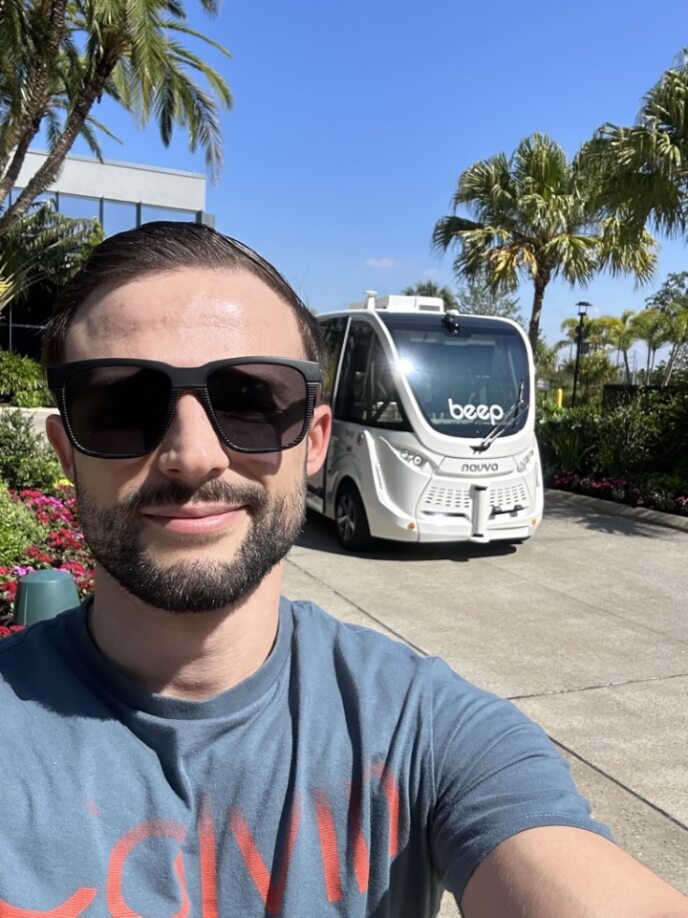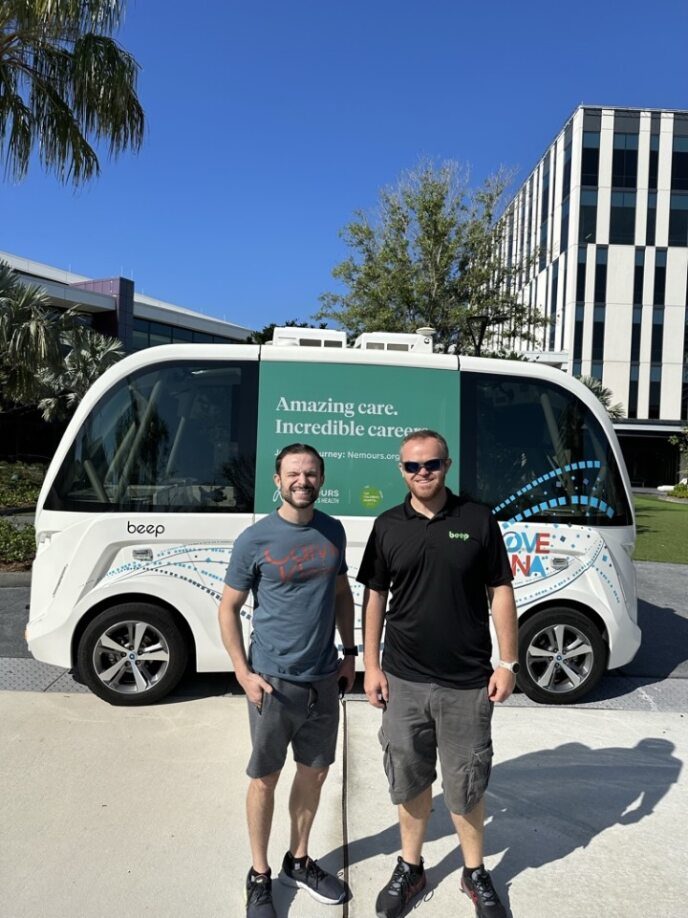By: Ines Aviles-Spadoni, M.S.

In Orlando, Florida, there are electric, driverless autonomous shuttles operating on the streets of Lake Nona, a community that prides itself on embracing modern technology and innovation. The shuttles can transport up to 10 people at a time, driving residents from neighborhoods in the community to its central hub, the Town Center.
The shuttles are operated by Beep and manufactured by French company NAVYA. These and other shuttles in the state mark a significant stride toward Florida’s work to establish itself as a prominent hub for autonomous vehicle research, deployment, and testing.
In collaboration with Beep, UFTI researchers are evaluating how AVs behave when in a mixed-traffic environment alongside conventional cars. To support this research, Beep has provided GPS data collected from their autonomous shuttles.
Renan Favero, a third-year doctoral student working at the UFTI with Dr. Lily Elefteriadou, is leading the “Calibration and Simulation of Autonomous Shuttles” study at Lake Nona. He has spent countless hours driving in a conventional car in front of shuttles at the site. Favero gathers data to create a tool that will simulate how AVs perform under different scenarios. His main goal in this study is to accurately model AV shuttle movements and then use simulation to investigate various traffic, design, and traffic control scenarios to determine AV shuttle impact on traffic operations.

“The problem that we want to solve is the lack of tools available to simulate AVs, so we needed to collect real-world data for model calibration and later simulate how these vehicles behave in traffic,” Favero said. “For example, after we simulate different scenarios, we can understand if the AV will result in deterioration of traffic flow or how they perform in a single lane. We can suggest a road design based on this information to optimize the traffic operation.”
Favero’s data collection will evaluate how AVs decelerate and accelerate, highlighting the differences from human drivers. Favero is writing a paper related to his work, which will also become part of his doctoral dissertation work.
The benefits of his work have real-world implications, as city agencies will be able to use his tool to evaluate the impact of AV shuttles on bus corridors before they are put into operation. Still, Favero says more work needs to be done.
“We are working to assess shuttle trajectories so that the AV industry can provide safe and comfortable trips,” he said. “We will learn how these vehicles behave during the pilot study phase to maximize safety for all users.”